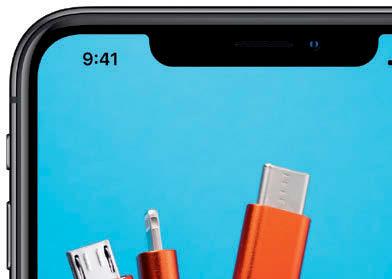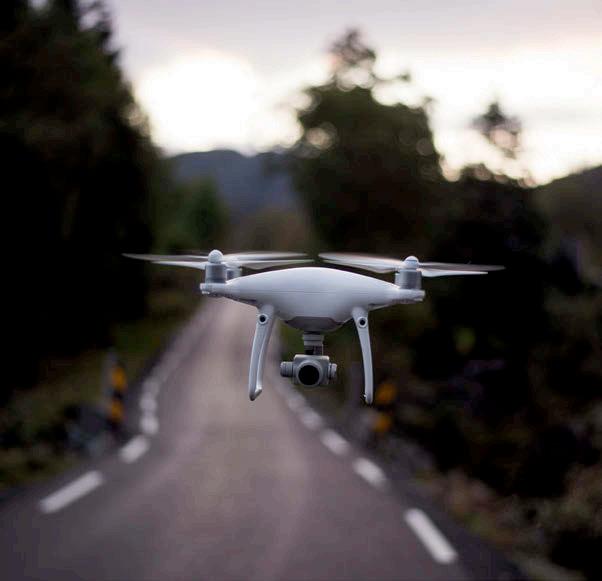
2 minute read
NOKIA QUERIES OPEN RAN
from UK5G. Issue 10
platforms and the objective of the green deal to reduce energy consumption,” said Damas, in comments reported by Light Reading. “No one disputes that you can do Layer 1 [the transmission and reception of bit stream data such as radio signals] with an accelerator using x86 for wireless. The problem is you need a room compared to one box or a rack”.
The power consumption increase involved in moving away from specialist proprietary hardware from vendors like Nokia has been disputed. The Open RAN Policy Coalition, for example, points out that while datacenter computations have increased 550 per cent in the past decade, power consumption has increased 1.6 per cent. In addition, it argues, shifting radio and distributed functions to the cloud, or even pooling them, result in energy savings – which goes under the name CloudRAN or vRAN.
Advertisement
Ofcom Drones
NOKIA’S POLICY CHIEF HAS said Open RAN raises security and environmental concerns
Florian Damas said a move to COTS (commoditised, off-the-shelf) hardware resulted in much greater power requirements, particularly if Intel’s power-guzzling PC chips x86 are used.
“The reason why established vendors have custom-made system-on-a-chip hardware solutions is to ensure that we meet the targets when it comes to energy efficiency. We have to be very careful between everything on common
Damas also drew attention to security. Research from Strand Consulting noted over 50 Chinese companies have joined the Open RAN initiative: “it is not clear how trading one known insecure Chinese vendor for 50 unknown Chinese vendors is the path to greater security,” argued analyst John Strand. https:// strandconsult.dk/fact-vs-fiction-the-10parameters-of-openran/ https://on.wsj.com/35XrWjL
“Nokia is a supporter of Open RAN and was the first major telco equipment vendor to join the O-RAN ALLIANCE” the company emphasised in a statement.
EU ONE PLUG TO RULE THEM ALL 241m
The European Union has announced that it wants one type of wired charging port for consumer electronics devices. The changes are partof the Radio Equipment Directive, and will require Apple to drop its decade-old Lightning connector for iPhones, first introduced with the iPhone 5 in 2012, as it has decreed that the USB C connector is the chosen one. New labelling will be required to inform consumers of the power charging performance of both cables and power plugs, as these vary wildly within the USB C family of standards.


million iPhones are sold globally, and 56 million in Europe each year.
The Commission cited “consumer frustration and e-waste” as the reasons, suggesting that disposed of and unused chargers 11,000 tonnes of e-waste a year. Apple has argued that mandating USB C will cause a rapid overnight increase in e-waste. Apple was the first to remove a bundled charger from new smartphones in 2019, and Samsung and others have since followed suit. Apple argues that decoupling the socket from the cable allows far greater re-use of existing chargers.
OFCOM HAS PROPOSED A new licensing framework for aerial drones, hoping to ease the path to commercial uses such as unmanned parcel delivery. Currently, Ofcom and the Civil Aviation Authority set the rules for drones, with most being license exempt so long as they confirm to certain rules on radio power transmission and usage. The owner and operator must self-register with the CAA, but most can operate in unlicensed spectrum. In practice this limits legal use to line-of-sight craft.
The new framework proposes the introduction of a new Unmanned Aircraft System Operator Radio license that allows drones that operate beyond the line of sight, at much greater altitudes, and over long distances. Examples cited include postal drones making deliveries to remote communities, the rapid delivery of urgent medical supplies, and the use of drones to inspect industrial machinery such as electricity pylons.
“A drone spectrum licence does not necessarily indicate that the CAA has permitted the equipment to be carried,” Ofcom notes. “Although the proposed licence provides the framework for authorisation of the use of mobile terminals on a commercial drone, the licensee would need to have obtained a written agreement from the mobile network operator prior to use.” https://www.ofcom.org.uk/consultationsand-statements/category-1/spectrum-forunmanned-aircraft-systems https://www.mobileworldlive.com/lateststories/ofcom-readies-drones-liftoff
A consultation on Ofcom’s Spectrum for Unmanned Aircraft Systems (UAS) is open until September.










